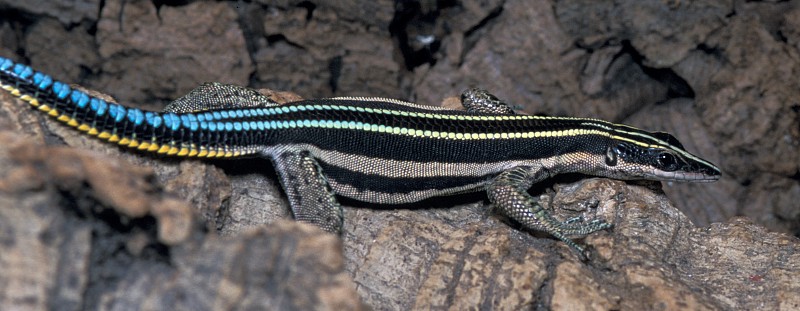- Home
- News
- General News
- Showing how lizard...
Showing how lizard descends
07-09-2009
New results explain why the African neon blue-tailed tree lizard glides without having developed a special morphology.
Share
The following is an extract of the complete article published on ESRFnews(page 7).
There are several species of animals in the world that have evolved the ability to control their aerial descent by parachuting or gliding to the ground. These animals have developed a morphology that allows them to control their descent. This is not the case for the African neon blue-tailed tree lizard (Holaspis guentheri), which has nevertheless been seen “gliding” without having any external specializations such as skin flaps or membranes. Scientists from the University of Antwerp (Belgium) and the Musée National d’Histoire Naturelle (France) decided to find out whether these reptiles control their descent when jumping from tree to tree.
Their first approach involved filming neon blue-tailed tree lizards, gliding geckos and the common wall lizard as the animals leapt from a 2 m high platform. They then visited the ESRF to study the internal structure of the animals. At first, the video clips did not show any obvious indications that the African lizard could control its descent any better than the common wall lizard.
 |
|
The African neon blue-tailed tree lizard. Credits: K D’Aout. |
The team analysed the skeletons of the three species on ID17 and ID19. Thanks to the X-rays, they could see that the tree lizard’s bones were light, not strongly ossified and full of foramina, making its skeleton light for gliding.
Reference:
Vanhooydonck et al. 2009 J. Exp. Biol. 212 2475–2482.



